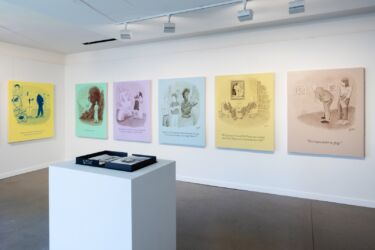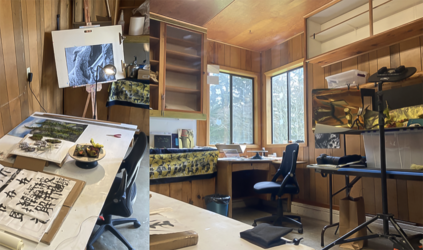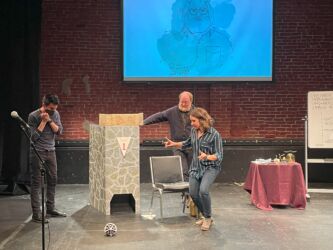Artist and legendary street artist Robbie Conal talks about:
His family history, including his two activist-and-politically inclined parents, his background in fighting the power; moving up to Los Osos (in San Luis Obispo County) as a permanent residence (back after the 2008 crash), but keeping a small place in L.A.; what he misses about not being in the city (he’s lived in NYC and SF as well as L.A.); his first big moment with public art, through postering, which was born out of caricature paintings he was making of Ronald Reagan’s cabinet, which he dubbed ‘Men with No Lips,’ and alighted through a large postering campaign just as Museum of Contemporary Art, Los Angeles, was opening to the public in 1986; how he’s Shepard Fairey’s OG, and how he was an influence on him as a future street artist (though Fairey said, “I can do that” quite confidently); his personal mantra: “apply what you do best to what you care about most,” which in his case his drawing and talking smack (does best) and American democracy (cares about most); how, to make his work quicker to keep his work temporal, he switched from oil painting to charcoal and then to acrylic with oil accents; how all his friends who have his art (mostly of terrible characters) have them in their toilets; and his most popular work, “Watching, Waiting and Dreaming,” a triptych of Gandhi, the Dahli Lama and Martin Luther King.
This podcast relies on listener support; please consider becoming a Patreon supporter of the podcast, for as little as $1/month, here: https://www.patreon.com/theconversationpod
In the 2nd half of the conversation, available to Patreon supporters, we talk about:
How he’s sustained himself financially over the decades outside of sales of his work, from teaching to receiving donations to his postering campaigns to lots of (young) volunteers; what he thinks about street art, and mural art, today, and the distinction between graffiti, street art and poster art, and how his reputation saved him from competing street artists when he was postering; our different respective takes on street art, and how Leon Trotsky taught him that everything is political, and street art is inherently political; what he’s learned from terrible jobs: mainly, you can’t make good art, let alone great art, in your spare time, while holding down a full-time job (and doing the work on the side); the most commonly asked questions he’s received about postering (how many times have you been arrested?); how part of your mission as a poster is muscling up for the consequences; and what the best thing is to say to the judge when you’re asked why you did it.
And for the final 15 minutes of our talk, he covers the breadth of logistics related to putting up posters in public/on the street, which he refers to as ‘acts of civil disobedience.’































































































